The Chardham Yatra is a highly sought-after pilgrimage. Mentioned in various Puranas and other sacred scriptures, the holy sites hold immense significance. Every year, lakhs of devotees set foot on this Devbhoomi to seek divine blessings. However, all these sites are nestled in the Garhwal region of Uttarakhand and are situated at very high altitudes. The Yatra here poses a series of challenges to the pilgrims. Therefore, before you embark on this journey, proper planning is required. In this guide, we will delve into this very topic and discuss all the details of Chardham Yatra planning.
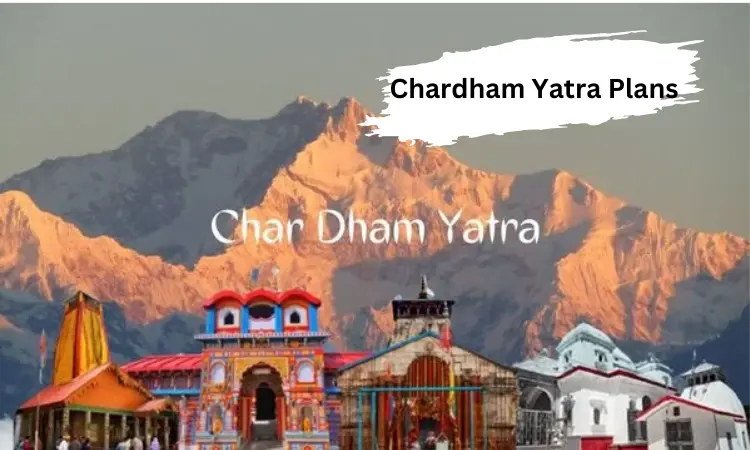
Significance of Chardham Yatra
The Char Dham Yatra is essentially a tour to the four sacred sites of Yamunotri, Gangotri, Kedarnath, and Badrinath. These Chardham Yatra places are dedicated to the prime deities in Hinduism – Lord Vishnu, Lord Shiva, Goddess Ganga, & Yamuna, and therefore hold huge religious importance.
Talking about the history of these holy sites, it dates back centuries! People have been embarking on this sacred journey for a long time. It’s believed that undertaking this Yatra cleanses one’s sins and leads to Moksha. Every devout Hindu must visit these holy places at least once in their lifetime to fulfill their religious duty. Each of the four sites holds its own significance:
- Yamunotri: It is considered to be the source of the Yamuna River and is dedicated to Goddess Yamuna.
- Gangotri: Although the original source of the Ganga is 18 km away from the shrine, it’s religiously considered the source of the holy river.
- Kedarnath: It is dedicated to Lord Shiva and is also one of the revered twelve Jyotirlingas.
- Badrinath: This is a highly sacred shrine for Vaishnavites. Dedicated to Lord Vishnu, it’s also one of the 108 Divya Desams.
Challenges for Chardham Yatra
Char Dhams are peak religious sites, however, reaching there and then staying there comes with a loads of challenges. Let’s dive into the matter:
- Geographical Terrain: The Char Dhams are nestled in one of the most difficult to traverse mountainous terrains, and are rife with rugged trails. The journey is physically demanding and arduous, to say the least. It’s especially hard for senior citizens.
- Weather Conditions: The weather in the hilly terrains is unpredictable. It could be sunny one moment, and rainy the next. In addition, there’s always a risk of a landslide. Also, snowfall can disrupt your travel plans anytime.
- Infrastructure: The Char Dhams are located in a remote location of the Himalayas and therefore offer only limitedly developed infrastructure. Expect fewer amenities, accommodation facilities, and medical services.
- Altitude Sickness: Since these holy sites are nestled at high altitudes, with Kedarnath being the highest of them all, altitude sickness is a common symptom that pilgrims have to battle.
However, despite these challenges, the Chardham Yatra is spiritually rewarding and is culturally significant nonetheless. And therefore, it continues to attract millions of pilgrims each year.
Opening and Closing Dates of Yatra 2025
The Dham gates are opened to the public as per the Hindu religious calendars and auspicious timings. They become accessible on the auspicious event of Akshaya Tritya. Therefore, the opening and closing dates of the Chardham Yatra vary every year. However, generally, the Yatra begins in late April or early May and concludes around October or November. This year, the opening for the Chardham sites are as follows:
Opening Dates:
- Yamunotri: 30 April 2025
- Gangotri: 30 April 2025
- Kedarnath: 2 May 2025
- Badrinath: 4 May 2025
Most temples close around the time of Diwali, the festival of lights, which usually falls in October or November.
Closing Dates (Tentative):
- Yamunotri: 23 October, 2025
- Gangotri: 22 October, 2025
- Kedarnath: 23 October, 2025
- Badrinath: 6 November, 2025
Weather Conditions
The weather in the Char Dhams is very different according to the seasons. Here’s what you can expect in the following time windows:
Summer (May to June)
You can expect pleasant weather during this period. The temperatures are mild while the skies are clear, for the most part. This season is ideal for sightseeing and other outdoor activities. However, be cautious as occasional rainfall and temperature fluctuations can still happen.
Monsoon (July to August)
This season is marred by heavy rainfall. Moreover, there’s a high risk of landslides. You get slippery roads and road blockages, too. Due to all these concerns, it’s often advised to skip your trip here during monsoons.
Post-Monsoon (September to October)
You can enjoy the lush greenery that the monsoon leaves behind. The weather is delightful and is another great period to visit here. However, it’s colder during this period as compared to the summer season.
Winter (November to April)
The weather gets extremely cold due to the intense snowfall. The temple Kaputs are shut closed and the pilgrimage is officially paused.
Best Time to Visit
The best time to undertake the Chardham Yatra is, hands down, in the summers (May to June) and post-monsoon season (September to October). The weather is great, plus the pilgrimage sites are easily accessible, without rain and extreme cold ruining it.
And we highly advise against visiting there in the monsoon season because of safety concerns.
How to Reach
The Chardhams can be reached via road, rail, or air. Upon arriving at the holy sites, you can easily find hotels near the Badrinath temple. Similarly, if you reach Kedarnath, you will find the best affordable Kedarnath hotels near your destination. So, through this Chardham Yatra plan guide, you will be able to explore more about the Chardham pilgrimage Yatra.
- By Road: Pilgrims can travel to Uttarakhand by road from major cities like Delhi, Dehradun, and Haridwar. Regular bus services and private taxis are available for transportation to the Chardham sites.
- By Rail: The nearest railway stations to the Chardham sites are Haridwar and Rishikesh. From these stations, pilgrims can hire taxis or board buses to reach the pilgrimage sites.
- By Air: The nearest airports to the Chardham sites are Jolly Grant Airport in Dehradun and Pantnagar Airport in Uttarakhand. From these airports, pilgrims can either hire taxis or take connecting flights to reach the nearest airstrip to their chosen Chardham site.
Registration for the Yatra
As per the state Government of Uttarakhand, the registration for the Char Dham is mandatory. This is done to better track the pilgrim movement across the tricky terrains of the Himalayas and provide aid & safety, if required. To register, you can do the following:
- Visit the official registration site of the government.
- Upload your ID proof (preferably Aadhaar Card/PAN/Voter ID).
- Fill in your travel dates.
- At the end, you’ll get an e-Pass. Print it as well as download your slip.
Also, don’t forget to bring it on your trip, as it’s checked at multiple checkpoints.
What to Pack?
Keeping in mind the cold and high-altitude location of the Char Dhams, it’s best if you bring the following:
- Warm clothes like woollen sweaters, jackets, woollen socks, gloves, and windcheaters
- Trekking shoes with good grip
- Rain gear such as raincoat, Umbrella, and water-proof bags
- Sun protection: sunscreen, sunglasses, and moisturizer
- Snacks with high carbohydrate content, such as dry fruits, chocolates, ORS solution, glucose biscuits, etc.
- First aid kit, essential medicines, and disposable oxygen bottles
- Other necessary items such as power banks, torch, and Yatri pass printout
Chardham Route Map
The Chardham Yatra follows a specific order. The typical route followed by pilgrims is as follows:
Yamunotri Route Map
The sacred Yatra begins from the town of either Haridwar or From here on, the pilgrims travel to the town of Barkot via scenic Mussoorie. From Barkot, they reach Janki Chatti first. This is the trekking base for the shrine. Pilgrims begin their 6 km trek to Yamunotri from here.
- Haridwar → Rishikesh → Barkot → Janki Chatti → Yamunotri
Gangotri Route Map
After completing their Yamunotri Darshan, pilgrims go back to Barkot on the same day. The next day, pilgrims drive to the town of Uttarkashi, which is the base for the Gangotri pilgrimage. From Uttarkashi, pilgrims reach Gangotri by road. No trekking is required for this Dham.
- Yamunotri → Barkot → Uttarkashi → Gangotri
Kedarnath Route Map
After seeking blessings from the Goddess Ganga, devotees return to Uttarkashi and head towards the town of Guptkashi, which serves as the base for the Kedarnath pilgrimage. From Guptkashi, they reach Sonprayag by road and then take a shared jeep to Afterwards, they trek to Kedarnath shrine.
- Gangotri → Uttarkashi → Guptkashi → Sonprayag → Gaurikund → Kedarnath
Badrinath Route Map
The final leg of the journey takes pilgrims from Kedarnath to the town of Joshimath via Guptkashi. From Joshimath, they proceed to Badrinath by road.
- Kedarnath → Guptkashi → Joshimath → Badrinath
Tour Itinerary
The typical itinerary for the Chardham Yatra is as follows:
- Day 1:Departure from Rishikesh/Dehradun to Barkot
- Day 2:Barkot to Yamunotri and back
- Day 3:Barkot to Uttarkashi
- Day 4:Uttarkashi to Gangotri and back
- Day 5:Uttarkashi to Guptkashi
- Day 6:Guptkashi to Kedarnath
- Day 7:Kedarnath to Guptkashi
- Day 8:Guptkashi to Joshimath
- Day 9:Joshimath to Badrinath and back
- Day 10:Return journey to Rishikesh/Dehradun
Pilgrims may choose to modify this itinerary based on their preferences and time constraints.
Places to Stay During the Yatra
You can avail lodges at a number of locations on the Chardham route. From budget hotels to resorts to Dharamshalas, there are plenty of options for you to rent. Some popular towns like Barkot, Uttarkashi, and Guptkashi offer a range of lodging options to cater to the needs of pilgrims.
| Location | Accommodation Options |
| Haridwar / Rishikesh | GMVN Tourist Rest House, Hotel Ganga Lahari, Zostel Rishikesh, Parmarth Niketan Ashram |
| Barkot | GMVN Barkot, Camp Nirvana, Hotel Kalindi, Kailash Residency |
| Janki Chatti | Kali Kamli Dharamshala, GMVN Janki Chatti, local homestays |
| Uttarkashi | GMVN Uttarkashi, Hotel Shivlinga, Shikhar Nature Resort, Bhagirathi Residency |
| Gangotri | GMVN Gangotri, Mandakini Guest House, Ganga Niketan, few Dharamshalas |
| Guptkashi | GMVN Guptkashi, Kedar Valley Resort, Hotel Vishnu Palace, Monal Residency |
| Sonprayag | Budget lodges, GMVN Rest House, Bhawan-type stays, Kedar Heights |
| Gaurikund | GMVN Gaurikund, basic Dharamshalas and guest houses |
| Kedarnath | GMVN Kedarnath, Punjab Sindh Awas, Bharat Sevashram, Himalayan Homestay, tents |
| Badrinath | GMVN Badrinath, Narayan Palace, Hotel Sarovar Portico, Parmarth Lok, many Dharamshalas |
Places to Visit during Chardham
Apart from the main temples at Yamunotri, Gangotri, Kedarnath, and Badrinath, there are several other attractions worth visiting during your Chardham Yatra. Give the following ones a try:
- Yamunotri: Surya Kund, Divya Shila, Hanuman Chatti
- Gangotri: Gaumukh Glacier, Bhagirath Shila, Pandava Gufa
- Kedarnath: Bhairavnath Temple, Chorabari Tal, Vasuki Tal
- Badrinath: Mana Village, Tapt Kund, Vasudhara Falls
Exploring these additional attractions will add layers to the pilgrimage experience. With these extra attractions, you get to bring the scenic touch to your otherwise spiritual trip.
Cost of Chardham Yatra
The cost of the Chardham Yatra usually ranges from ₹20,000 to ₹50,000 per person. The exact price, however, would depend on factors like luxury level of the trip, types of accommodation, and additional sightseeing activities.
Travel Tips for Pilgrims
The Yatra is long and challenging. Keep a note of the following for a less stressful trip:
- Since Char Dhams gets busy, especially during the peak season, it’s ideal that you book your hotels and transport in advance. This would save you a lot of last-minute hassle.
- The weather in the hilly regions is cold. Therefore, pack warm clothes like woollens, jackets, and muffler, and a cap.
- There’s a high risk of getting altitude sickness in the hills. You can prevent it somewhat by staying hydrated. Keep a water bottle with you and drink water regularly.
- To avoid altitude sickness, also acclimatize properly at lower altitudes. And while trekking, move at a pace that is comfortable to you. Don’t rush yourself.
- The Char Dhams are highly religious sites. Don’t do anything to get on the wrong side of the locals, such as consuming alcohol and non-vegetarian food.
FAQs
Q: Is the Chardham Yatra suitable for elderly people?
Ans: Yes, the Yatra is suitable for senior citizens. However, they must take precaution and must be in good health condition. It’s best to consult a physician before embarking on the trip.
Q: Are there medical facilities available along the route?
Ans: Yes, basic medical facilities are available at various points along the Chardham route. However, pilgrims should carry their own medicines, such as paracetamol, aspirin, and the altitude-sickness preventing pills.
Q: Can the Chardham Yatra be undertaken during the winter months?
Ans: The Chardham sites get closed during the winter season, owing to the heavy snowfall. Nonetheless, you can still visit the winter seats of the deities, located in Ukhimath, Joshimath, Mukhba, and Kharsali.
Q: Can I undertake the Chardham Yatra solo?
Ans: Yes, solo travellers can also go on the Chardham Yatra. However, for your own safety, join a group or hire local guides, especially in remote areas.
Q: What are the staying options for budget travelers?
Ans: There are plenty of affordable options at Dhams and nearby areas, such as Dharamshalas, guesthouses, shared dormitories, tents, and homestays.
Q: Can I take photos at the Chardham sites?
Ans: Generally, photography is allowed, however, don’t click pictures once you’re inside the temples. Respect the local customs at all times.
Q: What should I do in case of emergencies during my trip?
Ans: You can take assistance from the medical facilities nearby. You can also contact local authorities. In addition, carry a charged mobile phone with emergency contacts saved.
Q: What can I wear for my Chardham trip?
Ans: Dress modestly, especially while going to temples. Avoid revealing clothing. Traditional clothes are your best bet!
Conclusion
The Chardham Yatra is more than just a pilgrimage. It’s a scenic and culturally rich journey, sprawled across the majestic Himalayas! Despite the rugged terrain and cold weather, lakhs of pilgrims undertake this sacred journey every year! If you plan with care, you can easily deal with almost all the challenges that the sacred Yatra poses! Moreover, you can enjoy the trip more this way. This is a soul-transforming journey after all and must be lived every moment of it!

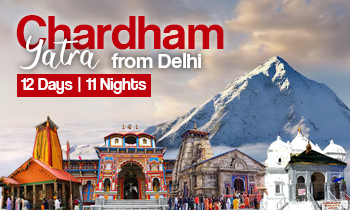
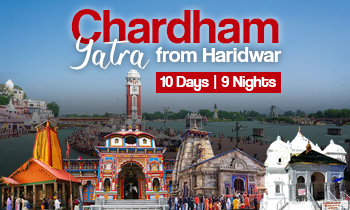

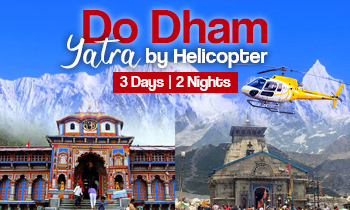
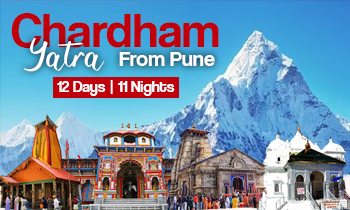
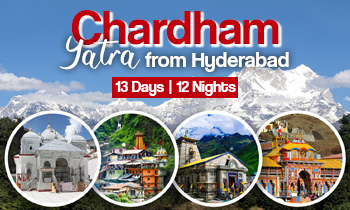
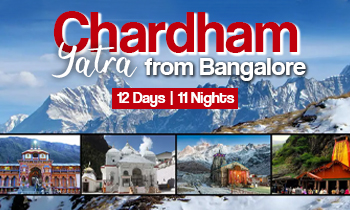
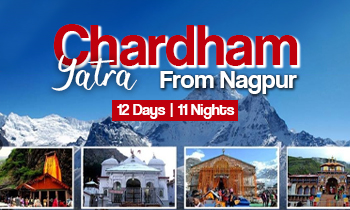
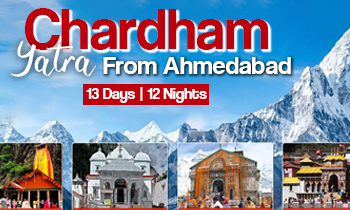
 Call
Call WhatsApp
WhatsApp Enquiry
Enquiry